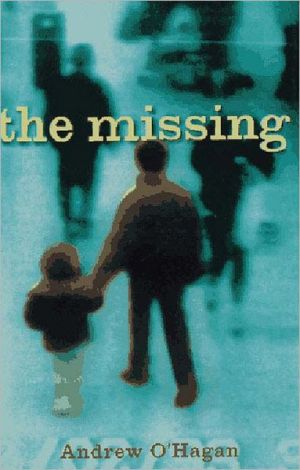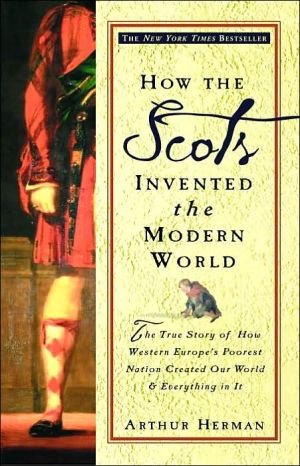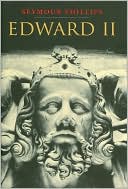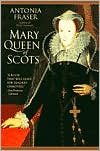Missing
The Missing is a fascinating literary meditation on missing persons by the acclaimed young Scottish writer Andrew O'Hagan. Writing with what one reviewer praised as "passion, eloquence, and honesty," O'Hagan explores one of society's most enduring, yet unexamined, concerns - missing persons. He writes movingly of his own grandfather, lost at sea during World War II; of Sandy Davidson, the three-year-old who disappeared from a construction site near O'Hagan's childhood home; of James Bulger,...
Search in google:
The Missing is a fascinating literary meditation on missing persons by the acclaimed young Scottish writer Andrew O'Hagan. Writing with what one reviewer praised as "passion, eloquence, and honesty," O'Hagan explores one of society's most enduring, yet unexamined, concerns - missing persons. He writes movingly of his own grandfather, lost at sea during World War II; of Sandy Davidson, the three-year-old who disappeared from a construction site near O'Hagan's childhood home; of James Bulger, the toddler abducted from a mall in Liverpool and murdered by two ten-year-olds in 1993; and the twelve young women Fred and Rosemary West murdered and buried in their Gloucester backyard over a period of nearly thirty years. In all of these cases, O'Hagan goes out with police and meets with social workers and families, always looking for the deeper truths so often left forgotten. What kind of lives did those who have gone missing lead? What made them disappear? What happens to those left behind? Publishers Weekly This remarkable book defies simple classification. Although ostensibly a study of missing persons (both from the perspective of the missing and those left behind), it is also an autobiography, an investigative report and a memoir of the effect of a story on the reporter who covers it. O'Hagan, a Scot of Irish ancestry, grew up in a "New Town" housing development near Glasgow. His childhood memories, which make up much of the first third of the book, are rich in stories of people who disappeared: a grandfather lost at sea, legends of Bible John (something of a Glasgow Jack-the-Ripper, who was never found), a neighborhood child about his own age who (perhaps) was lured into a van and never seen again and, the same year, a local young mother and her child who mysteriously dropped out of sight. O'Hagan's memoirs are noteworthy for their unromanticized treatment of children's cruelty toward each other. The second third of the book consists of interviews with parents of missing children, with a London missing persons police officer, with a coroner, with special workers concerned with runaways and with runaways who don't want to be found. The book ends with a long firsthand investigation of a Gloucester serial killer who buried his victims in his backyard. Quibbles could be made about the book's balance, as some sections are allotted more space than they need. A new introduction in which a Baltimore kidnapping is examined briefly has been added for this American edition. It would be unfortunate if the book's highly British ambiance keeps this insightful and personally affecting study from an American audience. (Nov.)
\ Publishers Weekly - Publisher's Weekly\ This remarkable book defies simple classification. Although ostensibly a study of missing persons (both from the perspective of the missing and those left behind), it is also an autobiography, an investigative report and a memoir of the effect of a story on the reporter who covers it. O'Hagan, a Scot of Irish ancestry, grew up in a "New Town" housing development near Glasgow. His childhood memories, which make up much of the first third of the book, are rich in stories of people who disappeared: a grandfather lost at sea, legends of Bible John (something of a Glasgow Jack-the-Ripper, who was never found), a neighborhood child about his own age who (perhaps) was lured into a van and never seen again and, the same year, a local young mother and her child who mysteriously dropped out of sight. O'Hagan's memoirs are noteworthy for their unromanticized treatment of children's cruelty toward each other. The second third of the book consists of interviews with parents of missing children, with a London missing persons police officer, with a coroner, with special workers concerned with runaways and with runaways who don't want to be found. The book ends with a long firsthand investigation of a Gloucester serial killer who buried his victims in his backyard. Quibbles could be made about the book's balance, as some sections are allotted more space than they need. A new introduction in which a Baltimore kidnapping is examined briefly has been added for this American edition. It would be unfortunate if the book's highly British ambiance keeps this insightful and personally affecting study from an American audience. (Nov.)\ \ \ \ \ Library JournalBritish author and journalist O'Hagan is predisposed by his experience to write about the lost. In 1976 three-year-old Sandy Davidson disappeared from the Glasgow suburb of Irvine and was never seen again. O'Hagan was eight at the time, but the espisode still smolders in his memory, and he was confronted with the grim truth that shapes his narrative, that "people could disappear." Even before O'Hagan's birth his grandfather was lost at sea during World War IIthe body never recovered. These memories spill over into his accounts of several disappearances and inform his ruminations on the phenomenon of missing persons. Fans of traditional true crime will be frustrated by the lack of resolution in the many case histories. There is little speculation as to what might have happened, and few details on the ultimate fates of those missing and later found murdered. The reader is adroitly situated to encounter the unsettling feeling of absence known all too well to those with loved ones who have gone missing. Highly recommended for literary nonfiction collections.Adam Mazmanian, "Library Journal"\ \ \ Kirkus ReviewsA haunting look at the phenomenon of missing persons.\ Scottish journalist O'Hagan explored the United Kingdom in search of stories of people who have vanished. He begins with his own grandfather, a sailor lost at sea, and continues the search through the ugly tenements where he grew up—and where several boys were lost. He interviews the families of these children, and their agony is horribly vivid. One father happened upon a look-alike of his missing son and almost begged the boy to move to his house and pretend to be his son. Other parents obsessively flip through photographs of their missing children, forever frozen in time at the age they were when taken. The police call the vanished "mispers," for missing persons, and are only now beginning to compile records on the subject. O'Hagan also visits a grim center for homeless teens, where the residents do their best to sever any remaining familial ties. He follows the trail of a number of lost girls to the home of Fred West, who killed at least 25 female boarders and buried them in his backyard. These stories are unrelenting, and O'Hagan presents solid insights into both the minds of the families and those of some who've deliberately disappeared. But the grisly litany would have been better served by the presence of real insight into why people vanish. He revisits the murder scene of James Bulger, a young boy killed by two 10-year-olds, and recounts episodes of his own cruelty, as a child, toward other children. But while O'Hagan raises the fascinating specter of child sadism, he doesn't speculate on its causes, quickly dropping the matter.\ Though somewhat lacking in a sense of the big picture, this is a powerfully observed and often heartbreaking portrait in miniature of those who disappear and the effect on those they leave behind.\ \ \








